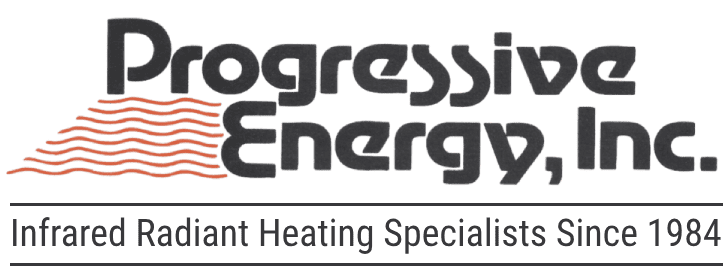In Business Since 1984
Faqs
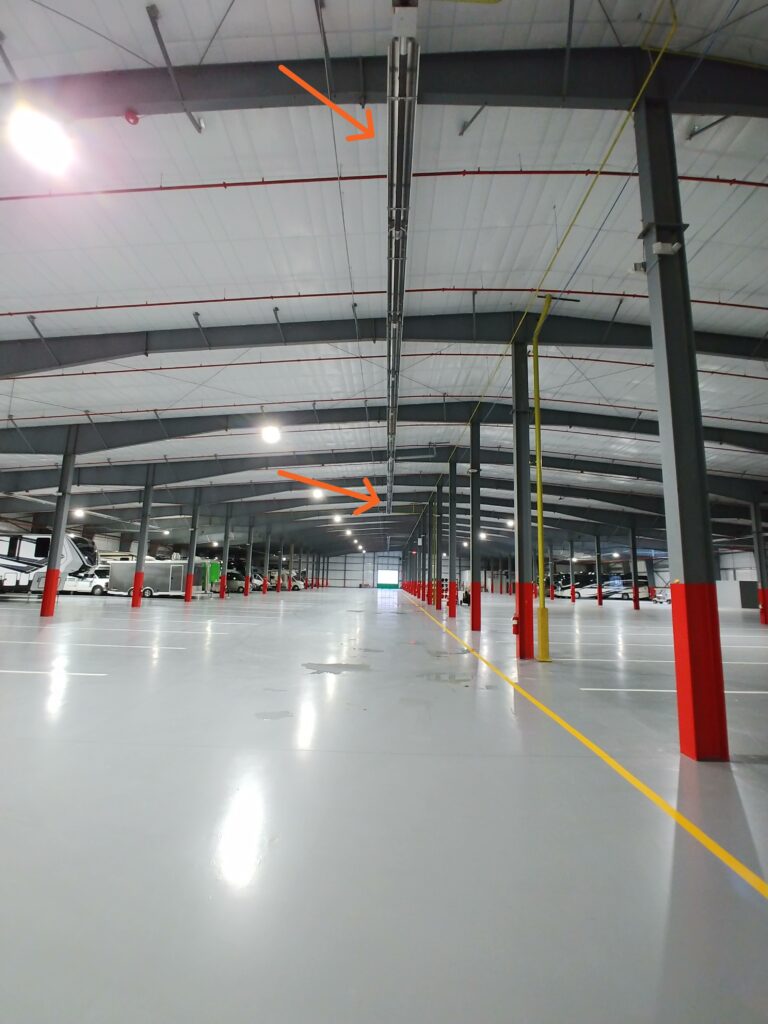
Got a Question?
Here are the most common questions we get asked. However, if your specific question isn’t covered here, we encourage you to contact us, and we’ll be happy to enlighten you.
What is infrared heat, and how does it work?
Please refer to the Infrared Basics page.
How even is the heat produced by infrared heating?
A properly designed infrared heating system is known to distribute heat very evenly, adding to the superior comfort level. People need not be under or near a heater to realize the overall building comfort.
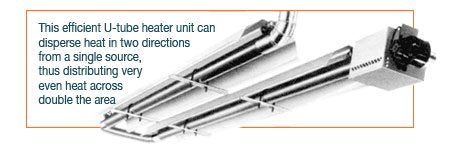
How complex are Solaronics infrared heating systems?
The heater and related components are actually remarkably simple, and so are their operation and maintenance. Refer to Infrared Basics for a full explanation of how Solaronics infrared heaters operate.
How is the heat recovery with infrared when doors are opened frequently?
In a word, fantastic. A sense of considerable comfort is gained even while doors are open. Even though the building’s air temperature can dip down due to doors opening, floors and objects remain warm. This aids in rapid heat recovery better than any other heating method available.
Does infrared pose any negative side effects from standing under a heater?
No. Infrared heaters do get hot; therefore, proper mounting distances must be met. However, there are no harmful effects from the radiant heat energy. Unlike the sun, infrared heaters do not produce ultraviolet rays. Only comfortable radiant warmth is produced, like standing by a fireplace or stove.
Do infrared heaters heat the air?
Indirectly, yes. Infrared heaters first heat objects such as the floor, machinery, people, etc. Then through various methods of heat transfer (radiation, reradiation, conduction, and convection), the air is heated secondarily as the objects emit heat. Keep in mind that the sun does not heat the air—it heats thermal masses, which in turn reradiates to heat the air. For a graphical representation of this process, visit Infrared Basics.
Is this new technology?
No. Infrared heaters have been manufactured since the early 1960s for commercial heating. Its popularity increased noticeably in the 1980s as the benefits became more widely acknowledged. Progressive Energy, Inc. has specialized in infrared heating since 1984.
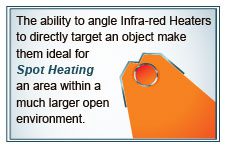
What is the difference between space heating and spot heating?
Space heating is heating an entire room or building. Spot heating is warming an area within a much larger unheated structure, such as sports spectator stands, a shippers’ station, a specific work area, or a restaurant patio.
How is the heat controlled within a building?
Typically, for space heating requirements, a thermostat that simply senses air temperature is used. In a spot-heating environment, a timer switch is sometimes used.
What are low-intensity and high-intensity heaters?
This can be a common source of confusion. A low-intensity heater is a tube heater, ranging in size from 10-ft. to 70-ft. long, and typically vented to the outdoors. Low-intensity heaters range in tube temperatures from 350 to 1,000 degrees Fahrenheit. A high-intensity heater, or ceramic-style heater, is small in nature, approximately 2 ft. square (+ -) in size. The surface temperature is far greater at 1,750 degrees Fahrenheit, producing an open, visible glowing surface. High-intensity heaters are unvented, and sometimes the building is vented from flue gases via a separate mechanical exhaust fan located within the building. Note that Infrared heaters are often called “radiant” heaters. Low-intensity tube heaters do not glow, and high-intensity heaters do glow.
Can infrared heaters be incrementally zoned, and what are the benefits?
Among the many benefits of infrared radiant heating, incremental temperature zoning ranks high on the list. In many instances, temperature demands and control should vary. Heating a large area to one temperature throughout is often not the most cost-effective approach. Only infrared heating can effectively zone without wall dividers or curtains. Warm air heating “zones” simply blend into each other. The result of infrared incremental zoning is increased control and comfort and substantial fuel savings.
Can Infrared be used in wet, corrosive environments?
Yes. Solaronics infrared heaters are available in optional stainless-steel construction (type 304L).
Isn't a high-efficiency warm air furnace or boiler nearly as cost-effective as infrared heating?
No. Fuel economy is accomplished through methods far beyond just combustion efficiency. Even a furnace or boiler with 90%+ AFUE often is no challenge to a properly designed infrared heating system. The simple fact still remains that regardless of the heating appliance combustion rating, warm air is still the means of distribution. And this warm air, even if produced more efficiently, still convects upwards and away from the primary heat zone. Cold floors still remain, and the heat has not been stored in thermal masses as with infrared heating. Infrared heats objects, thus re-radiating and heating the building from the floor level up.
How does infrared heating compare to in-floor radiant slab heating?
In the typical environment in which infrared heating is commonly found, infrared has notable benefits over in-floor slab heating. The heat recovery has proved to be very slow in a commercial building with in-floor radiant slab heating. This is due to the only heat source being the slab itself. Infrared has the added benefit of additionally heated thermal masses throughout the building, including machinery, tools, vehicles, etc. People benefit directly from the comfort of infrared, not having to wait for the air temperature to return to a certain comfort level after doors have been opened. Infrared heating can be used on demand. At several points throughout the year, infrared heaters can remain off, and when turned on, comfort is gained within minutes. In-floor heating takes several hours to overcome in a cold building. Finally, the initial installed system cost is many times greater with in-floor compared to an economical infrared system.
How does contaminated air or negative air pressure get handled?
Direct ducting can be used to supply clean outside air to the individual infrared burners. This sealed combustion solution can handle very dusty or negative air pressure conditions.
Is maintenance required?
Very minimal. Essentially, for optimum burner performance, the combustion inlet air blower should be kept clean. This typically is accomplished by using sealed ducted outside air to each burner.
Will infrared heaters mounted inches above my overhead cranes harm them?
This is a common concern. 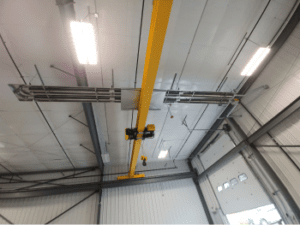 Frequently, infrared heaters are mounted in overhead crane bays in manufacturing and shipping areas. A very simple sheet metal shield mounted on top of the crane eliminates any heat concerns. We have encountered this issue in multiple instances with zero problems.
Frequently, infrared heaters are mounted in overhead crane bays in manufacturing and shipping areas. A very simple sheet metal shield mounted on top of the crane eliminates any heat concerns. We have encountered this issue in multiple instances with zero problems.
PO Box 10419
Bedford, NH 03110
Northern New England Phone: (603) 471-1414
CT, NY, NJ Area Phone: (860) 990-0061
info@progressiveenergyinc.com
